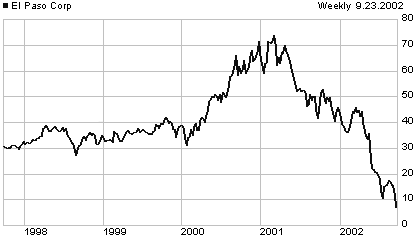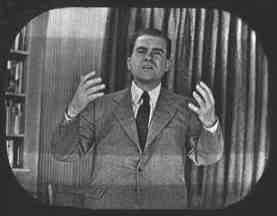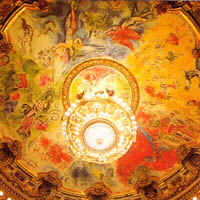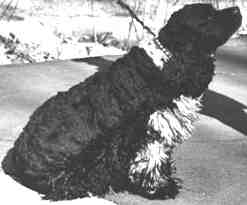1862 Lev Nikolayevich
graf Tolstoy, 34, marries teenager.
^top^
Count Leo Tolstoy married Sophie Andreyevna Behrs. Tolstoy is nearly
twice the age of his teenage bride. After losing his parents as a
child, Tolstoy inherited a large estate and was raised by relatives.
He began studies at Kazan University at age 16 but was disappointed
in the quality of education and returned to his estate in 1847 without
a degree. He proceeded to live a wild and dissolute life in Moscow
and St. Petersburg for the next four years. In 1851, he joined the
army and fought in the Crimean war.
He wrote about his wartime experiences in the successful Sebastapol
Sketches, published in 1855. He also wrote several other autobiographical
works while in the army. In 1857, Tolstoy visited Europe and became
interested in education. He started a school for peasant children
on his estate and studied progressive educational techniques.
The year after his marriage, he published
his first successful novel, The Cossacks. Tolstoy and his
wife proceeded to have 13 children over the next 17 years. Tolstoy
was constantly engaged in a spiritual struggle between his responsibilities
as a wealthy landlord and his desire to renounce his property altogether.
Some of his inner turmoil appeared
in his great masterpieces War
and Peace (1865-1869) and Anna
Karenina (1875-1877). Later in his life, he tried to give
away the rights to his works, but his wife gained control of the copyrights
for all his work published before 1880. Tolstoy became increasingly
radical, embraced anarchism, and was excommunicated from the Russian
Orthodox Church. In 1910, he fled his home secretly with his youngest
daughter but caught pneumonia and died at a remote railway station
a few days later, on 20 November 1910.
Ne; le 9 septembre (Gregorien) 1828 dans une riche et noble famille
russe, il se preoccupe du sort des paysans pauvres. Apres avoir participe
à la Guerre de Crimee (1854 - 1856), il abandonne famille et richesse
pour vivre avec les paysans. Son roman le plus celebre est Guerre
et Paix.
War
and Peace (1865-69) contains three kinds of material
— a historical account of the Napoleonic wars, the biographies
of fictional characters, and a set of essays about the philosophy
of history.
The work's historical
portions narrate the campaign of 1805 leading to Napoleon's victory
at the Battle of Austerlitz, a period of peace, and Napoleon's invasion
of Russia in 1812. Tolstoy portrays Napoleon as an ineffective, egomaniacal
buffoon, Tsar Alexander I as a phrasemaker obsessed with how historians
will describe him, and the Russian general Mikhail Kutuzov as a patient
old man who understands the limitations of human will and planning.
Particularly noteworthy are the novel's battle scenes, which show
combat as sheer chaos.
Among
the book's fictional characters, the reader's attention is first focused
on Prince Andrey Bolkonsky, a proud man who has come to despise everything
fake, shallow, or merely conventional. He joins the army to achieve
glory. Badly wounded at Austerlitz, he comes to see glory and Napoleon
as no less petty than the salons of St. Petersburg. Prince Andrey
repeatedly discovers the emptiness of the activities to which he has
devoted himself. Tolstoy's description of his death in 1812 is usually
regarded as one of the most effective scenes in Russian literature.
The novel's other hero, the bumbling
and sincere Pierre Bezukhov, oscillates between belief in some philosophical
system promising to resolve all questions and a relativism so total
as to leave him in apathetic despair. He at last discovers the Tolstoyan
truth that wisdom is to be found not in systems but in the ordinary
processes of daily life, especially in his marriage to the novel's
most memorable heroine, Natasha. When the book stops Pierre seems
to be forgetting this lesson in his enthusiasm for a new utopian plan.
The book's truly wise characters are
not its intellectuals but a simple, decent soldier, Natasha's brother
Nikolay, and a generous pious woman, Andrey's sister Marya. Their
marriage symbolizes the novel's central prosaic values.
The essays in War and Peace, which begin in the second half
of the book, satirize all attempts to formulate general laws of history
and reject the ill-considered assumptions supporting all historical
narratives. In Tolstoy's view, history, like battle, is essentially
the product of contingency, has no direction, and fits no pattern.
The causes of historical events are infinitely varied and forever
unknowable, and so historical writing, which claims to explain the
past, necessarily falsifies it. According to Tolstoy's essays, history
is made by the sum total of an infinite number of small decisions
taken by ordinary people, whose actions are too unremarkable to be
documented. Therefore Tolstoy's novel gives its readers countless
examples of small incidents that each exert a tiny influence —
which is one reason that War and Peace is so long.
In
Anna
Karenina (1875-77) Tolstoy applied these ideas to
family life. The novel's first sentence, which indicates its concern
with the domestic, is perhaps Tolstoy's most famous: "All happy families
resemble each other; each unhappy family is unhappy in its own way."
Anna Karenina interweaves the stories of three families, the Oblonskys,
the Karenins, and the Levins. The novel begins at the Oblonskys, where
the long-suffering wife Dolly has discovered the infidelity of her
genial and sybaritic husband Stiva. In her kindness, care for her
family, and concern for everyday life, Dolly stands as the novel's
moral compass. By contrast, Stiva, though never wishing ill, wastes
resources, neglects his family, and regards pleasure as the purpose
of life. The figure of Stiva is perhaps designed to suggest that evil,
no less than good, ultimately derives from the small moral choices
human beings make moment by moment. Stiva's sister Anna begins the
novel as the faithful wife of the stiff, unromantic, but otherwise
decent government minister Aleksey Karenin and the mother of a young
boy, Seryozha. But Anna, who imagines herself the heroine of a romantic
novel, allows herself to fall in love with an officer, Aleksey Vronsky.
Schooling herself to see only the worst in her husband, she eventually
leaves him and her son to live with Vronsky. Throughout the novel,
Tolstoy indicates that the romantic idea of love, which most people
identify with love itself, is entirely incompatible with the superior
kind of love, the intimate love of good families. As the novel progresses,
Anna, who suffers pangs of conscience for abandoning her husband and
child, develops a habit of lying to herself until she reaches a state
of near madness and total separation from reality. She at last commits
suicide by throwing herself under a train. The realization that she
may have been thinking about life incorrectly comes to her only when
she is lying on the track, and it is too late to save herself. The
third story concerns Dolly's sister Kitty, who first imagines she
loves Vronsky but then recognizes that real love is the intimate feeling
she has for her family's old friend, Konstantin Levin. Their story
focuses on courtship, marriage, and the ordinary incidents of family
life, which, in spite of many difficulties, shape real happiness and
a meaningful existence. Throughout the novel, Levin is tormented by
philosophical questions about the meaning of life in the face of death.
Although these questions are never answered, they vanish when Levin
begins to live correctly by devoting himself to his family and to
daily work. Like his creator Tolstoy, Levin regards the systems of
intellectuals as spurious and as incapable of embracing life's complexity.
Upon completing Anna Karenina,
Tolstoy fell into a profound state of existential despair, which he
describes in his Ispoved (1884; A Confession).
The Kreutzer Sonata (1891) is a dark novella about a
man who murders his wife.
Smert
Ivana Ilicha (written 1886; The
Death of Ivan Ilych) is a novella describing a man's
gradual realization that he is dying and that his life has been wasted
on trivialities.
Otets Sergy
(written 1898; Father
Sergius), which may be taken as Tolstoy's self-critique,
tells the story of a proud man who wants to become a saint but discovers
that sainthood cannot be consciously sought. Regarded as a great holy
man, Sergius comes to realize that his reputation is groundless; warned
by a dream, he escapes incognito to seek out a simple and decent woman
whom he had known as a child. At last he learns that not he but she
is the saint, that sainthood cannot be achieved by imitating a model,
and that true saints are ordinary people unaware of their own prosaic
goodness. This story therefore seems to criticize the ideas Tolstoy
espoused after his conversion from the perspective of his earlier
great novels.
In 1899 Tolstoy
published his third long novel, Voskreseniye (Resurrection).
The novel's hero, the idle aristocrat Dmitry Nekhlyudov, finds himself
on a jury where he recognizes the defendant, the prostitute Katyusha
Maslova, as a woman whom he once had seduced, thus precipitating her
life of crime. After she is condemned to imprisonment in Siberia,
he decides to follow her and, if she will agree, to marry her. In
the novel's most remarkable exchange, she reproaches him for his hypocrisy:
once you got your pleasure from me, and now you want to get your salvation
from me, she tells him. She refuses to marry him, but, as the novel
ends, Nekhlyudov achieves spiritual awakening when he at last understands
Tolstoyan truths, especially the futility of judging others. The novel's
most celebrated sections satirize the church and the justice system,
but the work is generally regarded as markedly inferior to War
and Peace and Anna Karenina.
The
novella Hadji
Murad (1904) is a brilliant narrative about the Caucasus.
Lev
Nicolayevich Tolstoy: Anna
Karenina. Roman v vos'my chastyakh
(po-russki)
TOLSTOY ONLINE (in English translations): |
 On
a 23 September:
On
a 23 September:  Two subsidiaries of El Paso had a contract to ship up to 1.2 billion cubic
feet of gas a day — nearly 20% of the state's supply — to Southern
California. Gas prices in the region plummeted after the El Paso contract
expired at the end of May 2001. Wagner initially decided there was not sufficient
evidence to show that El Paso withheld pipeline capacity. But FERC asked
him to take a second look based on recommendations from the commission's
staff investigators. He earlier ruled that the subsidiaries violated federal
rules governing the award of gas contracts.
Two subsidiaries of El Paso had a contract to ship up to 1.2 billion cubic
feet of gas a day — nearly 20% of the state's supply — to Southern
California. Gas prices in the region plummeted after the El Paso contract
expired at the end of May 2001. Wagner initially decided there was not sufficient
evidence to show that El Paso withheld pipeline capacity. But FERC asked
him to take a second look based on recommendations from the commission's
staff investigators. He earlier ruled that the subsidiaries violated federal
rules governing the award of gas contracts. 

 1954 East German police arrest 400 citizens as US spies.
1954 East German police arrest 400 citizens as US spies. 1783
Jane Taylor, author. TAYLOR ONLINE:
1783
Jane Taylor, author. TAYLOR ONLINE: